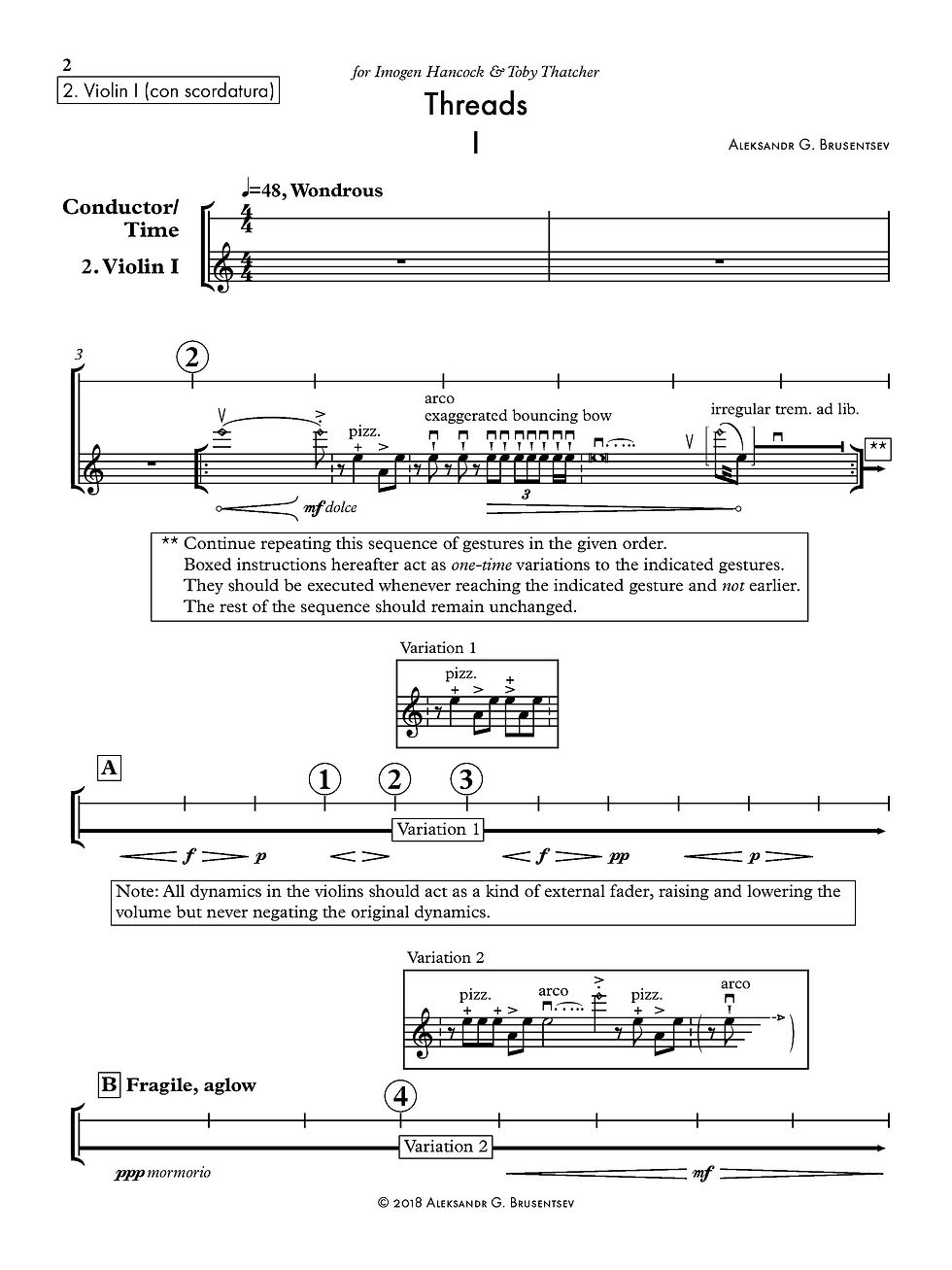Preparing Parts Part 2: An Exercise in Perspective
- Aleksandr Brusentsev
- Jan 16, 2018
- 2 min read
In part 1 I took a broad view on the topic of performance parts. Here, in the second post on the subject, I'll review the unique challenges I faced when preparing performance materials for Threads.
Let's start (as I did when making them) with the easy task, making parts for the everyone but the violins. Here the assignment was relatively straightforward: present the music clearly, make sure the page turns are comfortable, and write in cues where they are necessary. In other words, just do the job.

Dealing with the violins was a different story. The difficulty here was twofold. First, the material was ill-suited to traditional notation and required novel approaches that did not lend themselves to a smooth score-to-parts transition in Sibelius (the notation program I use). Second, the logistic concerns inherent to the performance setup (which can be seen in the pages in this post) required a multi-faceted approach to coordination and timing that further complicated and consequently slowed down the parts-making process.
It might be worthwhile to step back a second and look at intent: what did I want this to sound and look like?
In short, I wanted the violins (as a section) to sound like a murmuration looks:
In practical terms, this means they play out of time (or, more accurately in their own time) while responding in time (with the more traditional music happening in the lower strings). It's this latter bit that makes this all so very tricky.
Returning to the page, I approached the issue by shifting my perspective from that of a composer or music engraver to that of a player: what would I need to be free yet secure, to improvise yet follow?

As you can see, I opted for a combination of traditional notation, text and music boxes, and timelines. Because my primary goal was to free the players and invite in-the-moment reactions, I tried to minimize the amount of information given at any moment without ever depriving them a sense of place, something I feared would result in constricting lack of confidence in their actions.
To address the question of confidence, I had to pay special attention to how I handled timing and coordination. As I mentioned above, the cueing situation is hampered by setup: the players are spaced out and behind Toby (the conductor). This arrangement precludes him from prompting responses in the violins with pointing or eye contact as he would normally. If this were not enough of a hurdle, the spatial distribution produces a skewed sonic perspective, one that hinders the players' ability to hear cues from the stage ensemble.
To get around these hurdles, Toby and I decided to use strategically placed circled digits. Always numbered 1 - 5 these handy (sorry, I couldn't resist) cues allowed Toby to show a number with one raised hand while conducting with the other. This way the violins could get the cue they needed (without requiring Toby to turn around) while the rest of the ensemble retains an uninterrupted connection with the conductor. Everybody wins.










Comments